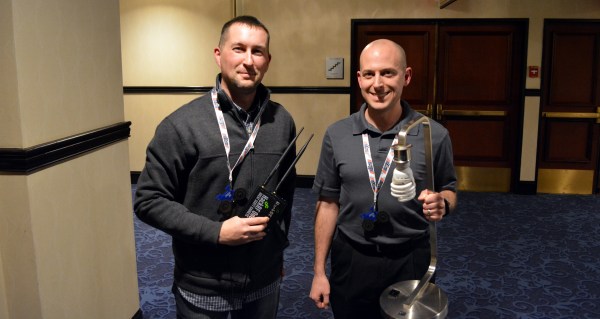[spillsman] is working on a IoT startup and wanted to work and play while he tested their hardware. His company, WifiThing, is bundling the Texas Instruments toolchain and mesh networking with a sort of plug-and-play web interface. The board uses a MSP430 and two other TI Networking chips to make setting up, logging data, and controlling outputs simpler. The web interface looks interesting, but in our experience this sort of approach only saves time up to a point. Then it’s time to pull out the chip’s various bibles, ‘nomicons, spell manuals, and supporting religious documents to get the thing to work.
Though, there are some projects where you would like a simple way to log data from multiple sensors, if this can do that easily (and more importantly, cheaply) it might be very cool. We are interested to see if the open source software is easy to integrate without buying their hardware. Either way, after setting up a simple circuit to heat the coil in the breathalyzer, and translate the data into a signal usable for the chip, [spillsman] was able to record alcohol levels and even keep a, perhaps unwise to record, high-score from his phone.
Continue reading “Web Connected Breathalyser With Phone Display”







 Their solution can be used by up to 20 different people who each get a slice of an SD card in the storage unit There are two physical pieces, a base station and the wireless storage unit itself. The base station connects to the host PC over USB and contains an Arduino for serial pass-through and an nRF24L01+ module for communicating with the storage side. The storage drive’s components are crammed inside a clear plastic box. This not only looks cool, it negates the need for cutting out ports to mount the fingerprint sensor and the OLED. The sensor reads the user’s credentials through the box, and the authentication status is displayed on an OLED. Files are transferred to and from the SD card over a second nRF24L01+ through the requisite PIC32.
Their solution can be used by up to 20 different people who each get a slice of an SD card in the storage unit There are two physical pieces, a base station and the wireless storage unit itself. The base station connects to the host PC over USB and contains an Arduino for serial pass-through and an nRF24L01+ module for communicating with the storage side. The storage drive’s components are crammed inside a clear plastic box. This not only looks cool, it negates the need for cutting out ports to mount the fingerprint sensor and the OLED. The sensor reads the user’s credentials through the box, and the authentication status is displayed on an OLED. Files are transferred to and from the SD card over a second nRF24L01+ through the requisite PIC32.








